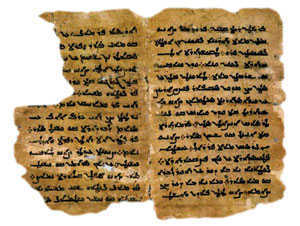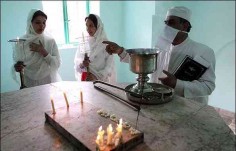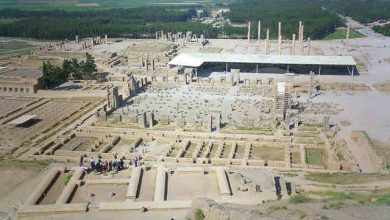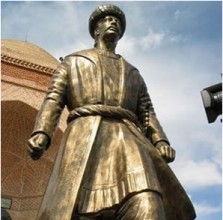Familiar with the ancient languages of Iran

linguistics Tongue Iranian languages and dialects have been classified into three parts in ancient times:
1-Old Iranian languages
2-Middle Iranian languages
3-Current Iranian languages
Old Iranian languages and Middle are not popular today and are known only from the documents left from the distant past. The languages of ancient Iran are called ancient Persian and Avestan..
Middle Iranian languages
From the stone inscriptions of the Achaemenid kings, it can be seen that the ancient Persian language became simpler from the time of the Achaemenids, and the use of the grammar of that time was out of vogue, so the beginning of Middle Persian can be seen.(Pahlavi) considered at the end of the Achaemenid period from the fourth century BC. The Persian language of the Achaemenid period was called the ancient Persian language, according to the researches that have been carried out in Central Asia and China, familiarity with Middle Iranian languages has increased. .
…
Middle Persian language (Sasanian Pahlavi language ) party language (Parthian language ) Sogdian and Khwarazmi languages have been recognized by linguists .
Apart from this, many Pahlavi and Parthian words that entered the Armenian language during the Parthian and Sasanian eras are part of the Middle Iranian languages. 1 Western 2 They are separated in the east :
Western languages include Old Persian, Middle Persian, Parthian and modern Persian
Oriental languages include Sogdian, Scythian, and Kharazmi languages
Avesta languages which are similar and close to both categories from the point of view of linguistics
Among the Middle Iranian languages, Parthian is the language such as the Shapur I inscription on the wall of Zoroastrian Kaaba, Naqsh Rostam and Haji Abad Fars, and the documents found in Nesa, the old Parthian city, which is probably the tomb of the Parthian kings, which is written in Aramaic script. .
Middle Persian language
From this language, which is the same ancient middle Persian and current Persian and was the official language of Iranians during the Sassanid era, there are various works left that they have separated into several categories. :
1-The inscriptions of the Sasanian period, which is a script taken from the Aramaic script, but it is separate from the Parthian script
2-Pahlavi books, most of which are about Zoroastrian religion, the handwriting of these writings is like the Pahlavi inscriptions and writings of that time..
3-The writings left on coins, seals, jewels and pottery .
4-Writings of Manichaean works, written in Manichaean script, obtained from the explorations of Central Asia.
In all of these writings, except the works of Mani Hazvarash (hozvaresh) Aramaic is used, which is phonetically older than the Pahlavi period, but the Manuscript script reflects the dialect of its time. .
The works left from the Pahlavi period are the most part of pre-Islamic culture and Zoroastrian books
The most important epitaphs of the Pahlavi period are Shapur I's epitaph in Zoroaster's Kaaba, Rostam's inscription, and Narsi's epitaph. (nerd) can be mentioned in Paikoli and the other is the Naqsh Rajab inscription .
Important Pahlavi books that are special to Zoroastrian literature include:: Zardasht Namek, Dinkord, Madigan Hazar Dodestan
, Minawi Khard and the letters of Manouchehr, Pand Namah and Nirangstan written by Azar Pat Mar Sepandan Mobad during the Sassanid period, Zand, Bandesh, Dodistan Dinik and Arda Viraf Nameh and works that have less religious aspect such as Yadgar Zariran or Zariro, Arjasb, Goman Shekan, Ardeshir Babakan's performance and Asurik Tree, Khosrow Gwatan Ridak, Shatrang or Chatrang (Chess book )Arash Kamangir, Dariush Bozor and Gomata, the story of creation and Rostam's war with Divan .
Ardaviraf letter
It is a book written in Pahlavi during the Sassanid era, and it is the story of a pure and pious man named Ardaviraf, who started his heavenly and imaginary journey after washing his body and wearing new clothes and drinking three cups of Meng Ghstasbi from the fire temple of Farnbagh in Fars. And he calmed down in a pure bed and remembered the soul of the deceased and fell asleep and for seven days and nights visited the parts of heaven, hell and purgatory with the two angels Soroush and God Azar and inquired with the souls and then before Ormuzd. He was accepted and heard his message to his fellow believers. And on the seventh day of his return to this world, Ardaviraf narrated what he had seen and heard to the wise and wise secretary, so that he could see that these writings are Ardaviraf's letter and this book is in A hundred and one round people (Season) Is .
This book has been translated from Pahlavi into Sankrit, Kuchrati, Pazand, Persian, English, French and German. .
side line
The period of Pahlavi language begins with the inscriptions and coins of Ardeshir Babakan and ends with the religious books of Persian teachers after Islam. . The Pahlavi language has a compact script and Semitic words make it more difficult and it seems that these words are from 400 It is not more .
The alphabet with which the Pahlavi books were written 14 There are not many letters, all of them except the last letter are found in the Avestan script, and most of them represent several sounds, thus causing difficulties in reading. .
In Ibn Nadim's Al-Fahrst book, it is stated by Ibn Muqafa that the Persians had seven types of literature :
Din Debira, Wisp Debira, Shah Debira, Namah Ya Debira, Ham Debira, Raz Sohrieh, Ras Sohrieh, and in this book, Manawi script is also mentioned. .
Wisp Debira is attributed to Zoroaster . Hamza Esfahani, Ibn Nadim and Masoudi have considered all of Debira's Visp to be a common script. .
It should be remembered that these writings were not widespread in all of Iran and were limited to one region, and it seems that it was the official Pahlavi script, and after the spread of the Arabic script in Iran, the Pahlavi script was gradually forgotten by the Iranians. .
Only a group of Zoroastrian priests could read it. It is very difficult to read this line carved on stones. .
Hazwarash (hozveresh)
It can be seen in the Pahlavi writings of Hezwarash that this word that appears in the writings is an address in the form of an Aramaic word that was used to read instead of a Persian word. .
Live and watch
Zand in Avesta means the interpretation of Avesta writings in Pahlavi language, and the word Pazand was born in Iran after Islam, and it is a simpler Pahlavi language without its hazwar words, which is mostly written in simple Avesta or Din Dabiri script. It was written in illegible and difficult Pahlavi script and sometimes in Persian script, and Pazand can be considered as a commentary on Zand for easy reading of Avesta. .
Retrieved from :The book Civilization and Culture of Iran before Islam, written by Masoud Rouhi
Thanks to Ali Jamshidi, Soroush Jamshidi





